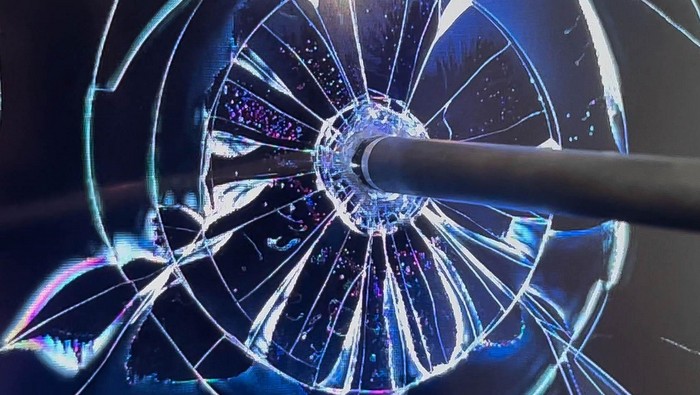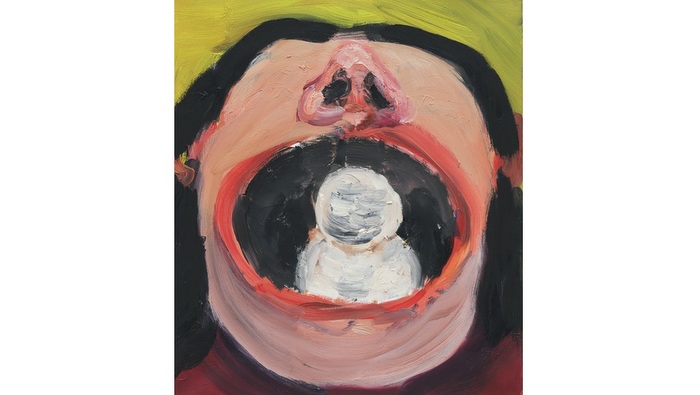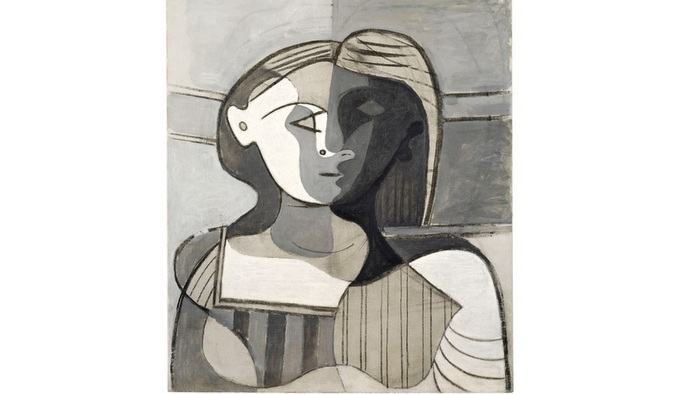Vitoria-Gasteiz: ARTIUM, Basque Museum-Center of Contemporary Art, inaugurates on April 15 the VideoStorias exhibition, a particular review of Spanish video-art produced in the last forty years through work of over seventy artists, a 50 per cent of which are women, with special emphasis in the last decade.
The exhibition is articulated through four possible paths: individual, political, technological and the connection with other artistic languages. The lines marking these paths get interweaved in some works, allowing visitors to "transfer" and change fate, just like the subway.
Commissioned by Blanca de la Torre and Imma Prieto, the display counts on a catalogue specially designed with different texts and details of exhibited works. ARTIUM has scheduled, along with VideoStorias, a conference series with the participation of Antoni Mercader, Eugeni Bonet, Guadalupe Echevarria and Gabriel Villota.
VideoStoriasdoesn’t sets out a unique path, lineal, strictly chronological on the history of Spanish video-creation from its beginning to our times but, far from it, the exhibition allows –and kind of demands– spectators, creating one or several itineraries which lead to one end, that can be handpicked by visitors.
Organized around four theme spheres (Teknes, Subjects, Politics and Hybrids) with evident references to Rayuela novel, by Julio Cortazar –clearly stated in the catalogue–, spectators follow itineraries marked with color lines but, as marked spheres are not exclusive at all, they jump –or change– among different contexts, just as in different lines of public transportation network.
Upon arriving in, spectators feel the necessity of handpicking the color of line to follow during the tour: blue, green, red or yellow. During the tour, spectators will find lines interweaved with works, which share two or more spheres; some of them even share three stations, just as Indian Circle, by Eugenia Balcells (1981), Estrecho Adventure, 1996, by Valeriano Lopez (1996) or 2000 Volts, by Guillem Bayo (2004). In these positions, they will have the opportunity of changing lines or following the same.
Teknes, Subjects, Politics and Hybrids
The blue line represent Teknes sphere (the technological sphere). By following it, spectators go into one of the possible histories of video in Spain, for this "route" takes a chronological itinerary which is linked to the technological development and the evolution of hardware as artistic expression means. Spectators will find here the images that had been recovered related to one of the first video-art works in Spain, Primera muerte, by Angel Jove, Antoni Llena, Sílvia Gubern and Jordi Gali (1970). Other works in the same line were produced by Eugeni Bonet (V2, 1973), Maite Ninou (Revival Solitary, 1980), Ignacio Pardo (Transito, 1988), Sergio Prego (Tetsuo Bound to Fail, 1998) or Maria Cañas (El perfecto cerdo, 2005); and spectators will be able to change lines after admiring works of Antoni Muntadas (Cadaqués Canal Local, 1974), Iñigo Salaberria (La noche navegable, 1993), Txuspo Poyo (Delay Glass, 2007) or Eugenio Ampudia (Collectors, 2009), among others.
The green route, Subjects, deals with portrait and self-portrait genres as well as the so called "mirror image" (the image of spectators as reflections of their presence in the exhibition). Through an inside or outside look at the artist, some works deal with matter such as genre, communication (or lack of communication) and the fragility and vulnerability of human beings. Works of Francesc Torres (Imitation of Myself, 1974), Alicia Framis (Before Your Name, 1998), Ruth Gomez (Animales de compañia, 2005), Pilar Albarracin (She Wolf, 2006), Eulàlia Valdosera (Interviewing Objects, 2008), Mabel Palacin (Hinterland, 2009), Angeles Agrela (Entrevista, 2010), Jordi Colomer (The Istanbul Map, 2010), Cristina Lucas (La Libertéraisonnée, 2010), or Carles Congost (Bad Painting, 2011), are stations in this line.
The red tour is Politics. The video has always allowed artists to devise a series of political speeches, focused on social issues, and draw scenery, including the most downbeat positions and the most radical utopias. Artists such as Colectivo Video Nou (Vaga de benzineres, 1977), Txomin Badiola (EAE. Accion en el museo, 1983-2001), Daniel Garcia Andujar (Technologies to the people. “Postcapital. Archive Project”. Black Box, 2006), Fernando Sanchez Castillo (Pegasus Dance, 2008), and Democracia (Ser y durar, 2011), among other, are represented in this route.
Finally, the yellow line, Hybrids, sets the connection between video-art and close-but-different spheres of creation, and shows the multiple dialogues held with other languages such as dance, music, performance, videogame, sculpture or video-clip, among other. Concha Jerez (OSNABRÜCK: OSNA-BRÜCK, 1988), Joan Morey (F_TERROR* ism par STP (Fucking Fashion Rules), 2002, Itziar Okariz (Thanks, 2004), Guillem Bayo (2000 volts, 2004), Eugenio Ampudia (Collectors, 2009), Dora Garcia (Insulto al publico: adaptacion, 2009), Daniel Canogar (Dial M for Murder, 2010) or PSJM (La isla de hidrogeno, 2010), are included in this VideoStorias’route.
The tour handpicked by spectators is irrelevant, they still have one element to determine the end of their history with video-art: one last stop, called Next station. It’s set as an á la carte video space they’ll be able to watch videos, which aren’t displayed in the main tours. So, the exhibition has an open end without categorical conclusions, as that’s one of the commissioners’ desires.
The catalogue
On the eve of VideoStorias, ARTIUM has published a special-design catalogue, one case that contains three books and one collection with the details of exhibited works. Like the exhibition, the catalogue allows readers to take different tours or skip some sections of the book, for it combines texts that give the possibility of choosing the reading order, inspired by works such as Rayuela, by Julio Cortazar, La exhibicion de atrocidades, by Ballard, and those “chose your own adventure” books which are aimed at young people.
Though Rayuela is even present in the index, for several chapters make reference to titles included in Cortazar’s book (“Del lado de aca”, “Del lado de alla”, “De otros lados”), it’s in “Itinerarios/Disyuntivas (De otros lados)”, text written by commissioners Blanca de la Torre and Imma Prieto, where that inheritance can be felt: the intersection of lines, the fact of inviting readers to jump from sphere to sphere, the possibility of having access to the essential information core...
The book also contains a chronological tour through the history of video-art –“Ni son todos los que estan, ni estan todos los que son (Del lado de alla)”, also by Prieto and Torre–, one text written by Angel Quintana (“Repensar las fronteras entre practicas e imagenes”), and a series of short personal texts, grouped in “Videorrelatos”, including authors such as Susana Blas, Antoni Mercader, Eugeni Bonet, María Pallier, Berta Sichel and Nekane Aramburu, among others.
The case also contains the details of this 78 works made by 77 artists, with a color code setting the lines for each work, and a curatorial comment by the commissioners.
Cuentos imaginados: el arte de la ilustración infantil
ARTIUM will also celebrate the International Day of Book with a public reading, a blues and flamenco concert and the inauguration of Cuentos imaginados: el arte de la ilustración infantile exhibition. This is the third year in a row that ARTIUM’s Library promotes a new art-bookcrossing experience.
A wide selection of books with the history of children’s illustration can be enjoyed in the exhibition. Furthermore, there will manuals on theory and technique of illustration, illustrators’ guides, illustration magazines and movies inspired in original tales. The Library’s virtual catalogue provides the possibility of consulting information on the history of illustration, awards, agencies, illustration associations, videos, interviews, bibliography and web resources.
Bookcrossing
ARTIUM kicked off, on April 11, the activities related to the International Day of Book with “the liberation” of 200 books on art, photography and architecture in emblematic spots of the capital. The books will be placed in sites such as the university campus, bus station or Virgen Blanca square. Who participate in the Bookcrossing, follow the instructions in the title page and inside the book and take three rules: reading it, searching it and releasing it. The book is registered at www.bookcrossing-spain.com and it can be traced from there.
The museum-center’s Library has been promoting this initiative for three years. Ever since, some thirty museums and art centers have joined ARTIUM and, this year, they will release 2 500 books on different artistic disciplines, which come from the duplicated sections of those libraries. Among them: Monterhermoso Cultural Center in Vitoria-Gasteiz, Tabakalera in Donostia-San Sebastian, Center of Contemporary Culture in Barcelona, La Casa Encendida in Madrid, Greco Museum in Toledo, among others.
ARTIUM. Basque Museum-Center of Contemporary Art
France 24, 01002 Vitoria-Gasteiz
www.artium.org
Source: Press release
Related Publications

Leo Pum presents HYPER LIKE at HYPER HOUSE
December 18, 2025
Aargauer Kunsthaus. Klodin Erb. Curtain falls dog calls
December 17, 2025











